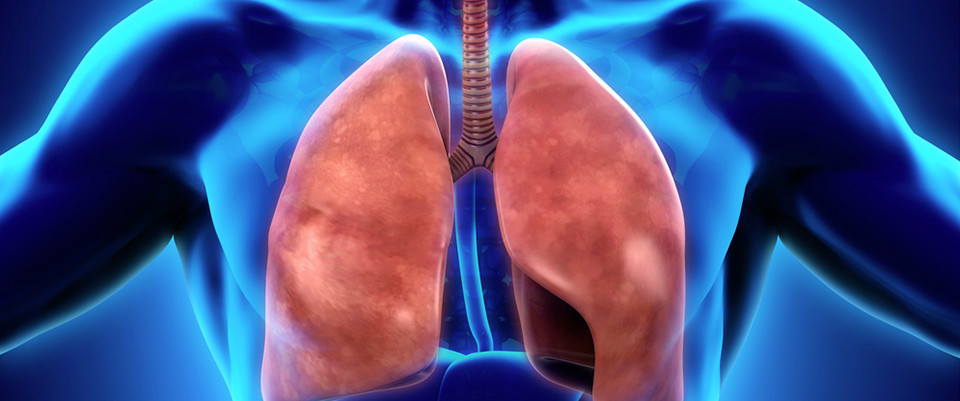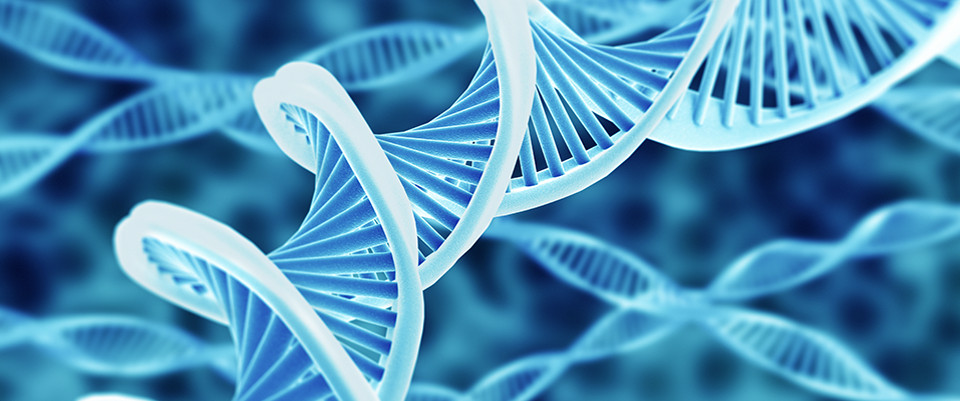PubMed
Beyond Volatile Phenols: An Untargeted Metabolomic Approach to Revealing Additional Markers of Smoke Taint in Grapevines (<em>Vitis vinifera</em> L.) cv. Merlot
J Agric Food Chem. 2023 May 9. doi: 10.1021/acs.jafc.2c09013. Online ahead of print.ABSTRACTWhen bushfires occur near wine regions, vineyards are frequently exposed to environmental smoke, which can negatively affect grapes and wine. For evaluating the severity of smoke exposure, volatile phenols and their glycosides are commonly used as biomarkers of smoke exposure. While critical to refining smoke taint diagnostics, few studies have comprehensively assessed the compositional impact of smoke exposure of grapes. In this study, Merlot grapevines were exposed to smoke post-véraison, with grapes being sampled both pre-smoke exposure and repeatedly post-smoke exposure, for analysis by liquid chromatography-high-resolution mass spectrometry. Volatile phenol glycosides were detected in control and smoke-affected grapes at ≤22 μg/kg and up to 160 μg/kg, respectively. The metabolite profiles of control and smoke-affected grapes were then compared using an untargeted metabolomics approach and compounds differentiating the sample types tentatively identified. The results demonstrate the presence of novel phenolic glycoconjugates as putative metabolites from environmental smoke together with stress-related grapevine metabolites and highlight the need to further characterize the consequences of grapevine smoke exposure with respect to the regulation of abiotic stress and plant defense mechanisms.PMID:37159503 | DOI:10.1021/acs.jafc.2c09013
Comparative Metabolomics Combined with Physiological Analysis Revealed Cadmium Tolerance Mechanism in Indica Rice (<em>Oryza sativa</em> L.)
J Agric Food Chem. 2023 May 9. doi: 10.1021/acs.jafc.3c00850. Online ahead of print.ABSTRACTCadmium (Cd) pollution reduces rice production and quality, putting food security and human health at risk. We conducted comparative physiology and metabolomic analyses in two indica rice ('NH199' and 'NH224') to elucidate the Cd-tolerance mechanism. Cd hampered rice growth, induced oxidative stress, and changed the metabolomics profiling of the root. The biochemical and physiological analysis demonstrated that NH224 exhibited a more potent Cd-tolerance ability than NH199. Cd was primarily distributed in root, and NH224 had a lower Cd translocation factor than NH199 by about 24%. The metabolomic analysis revealed 180 and 177 differentially accumulated metabolites between Cd-stressed seedlings and the controls in NH224 and NH199, respectively. In NH224, amino acids biosynthesis, hormone metabolism, lipids-related metabolism, phenylalanine metabolism, and phenylpropanoid biosynthesis pathways were more active and highly associated with antioxidant defense system, biosynthesis of the cell wall and phytochelatins, and maintenance of plasma membrane stability. These findings provide insights into the metabolic profiles of rice following Cd stress and the screening and breeding of Cd-tolerant rice varieties.PMID:37159413 | DOI:10.1021/acs.jafc.3c00850
Randomized crossover clinical trial of coenzyme Q10 and nicotinamide ribosome in chronic kidney disease
JCI Insight. 2023 May 9:e167274. doi: 10.1172/jci.insight.167274. Online ahead of print.ABSTRACTBACKGROUND: Current studies suggest mitochondrial dysfunction is a major contributor to impaired physical performance and exercise intolerance in chronic kidney disease (CKD). We conducted a clinical trial of coenzyme Q10 (CoQ10) and nicotinamide riboside (NR) to determine their impact on exercise tolerance and metabolic profile in CKD patients.METHODS: We conducted a randomized placebo-controlled, double blind, cross-over trial comparing CoQ10, NR, and placebo in 25 patients with eGFR of <60ml/min/1.73m2. Subjects received NR (1000 mg/day), CoQ10 (1200 mg/day), or placebo for 6 weeks each. Primary outcomes were aerobic capacity (VO2 peak) and work efficiency measured using graded cycle ergometry testing. We performed semi-targeted plasma metabolomics and lipidomics.RESUTS: Participant mean age was 61.0 ± 11.6 years and mean eGFR was 36.9±9.2 ml/min/1.73m2. Compared to placebo, we found no differences in VO2 peak (P=0.30, 0.17), total work (P=0.47, 0.77), and total work efficiency (P=0.46, 0.55) post NR or CoQ10 supplementation. NR decreased submaximal VO2 at 30W (P=0.03) and VO2 at 60W (P=0.07) compared to placebo. No changes in eGFR were observed post-NR or CoQ10 (P=0.14, 0.88). CoQ10 increased free fatty acids and decreased complex medium/long chain triglycerides. NR supplementation significantly altered TCA cycle intermediates and glutamate that are involved in reactions that exclusively use NAD+ and NADP+ as cofactors. NR decreased a broad range of lipid groups including triglycerides and ceramides.CONCLUSIONS: Six-weeks of treatment with NR or CoQ10 improved markers of systemic mitochondrial metabolism and lipid profiles but did not improve VO2 peak or total work efficiency.CLINICALTRIALS: gov (NCT03579693)FUNDING. This study was supported by National Institutes of Diabetes and Digestive Kidney Diseases R01 DK101509 (to BK), R03 DK114502 (to BR), R01 DK125794 (to BR), R01 DK101509 (to JG), Dialysis Clinics Incorporated C-4112 (to BR), Northern California VA Health Care System (BR).PMID:37159264 | DOI:10.1172/jci.insight.167274
Pathobionts in the tumour microbiota predict survival following resection for colorectal cancer
Microbiome. 2023 May 8;11(1):100. doi: 10.1186/s40168-023-01518-w.ABSTRACTBACKGROUND AND AIMS: The gut microbiota is implicated in the pathogenesis of colorectal cancer (CRC). We aimed to map the CRC mucosal microbiota and metabolome and define the influence of the tumoral microbiota on oncological outcomes.METHODS: A multicentre, prospective observational study was conducted of CRC patients undergoing primary surgical resection in the UK (n = 74) and Czech Republic (n = 61). Analysis was performed using metataxonomics, ultra-performance liquid chromatography-mass spectrometry (UPLC-MS), targeted bacterial qPCR and tumour exome sequencing. Hierarchical clustering accounting for clinical and oncological covariates was performed to identify clusters of bacteria and metabolites linked to CRC. Cox proportional hazards regression was used to ascertain clusters associated with disease-free survival over median follow-up of 50 months.RESULTS: Thirteen mucosal microbiota clusters were identified, of which five were significantly different between tumour and paired normal mucosa. Cluster 7, containing the pathobionts Fusobacterium nucleatum and Granulicatella adiacens, was strongly associated with CRC (PFDR = 0.0002). Additionally, tumoral dominance of cluster 7 independently predicted favourable disease-free survival (adjusted p = 0.031). Cluster 1, containing Faecalibacterium prausnitzii and Ruminococcus gnavus, was negatively associated with cancer (PFDR = 0.0009), and abundance was independently predictive of worse disease-free survival (adjusted p = 0.0009). UPLC-MS analysis revealed two major metabolic (Met) clusters. Met 1, composed of medium chain (MCFA), long-chain (LCFA) and very long-chain (VLCFA) fatty acid species, ceramides and lysophospholipids, was negatively associated with CRC (PFDR = 2.61 × 10-11); Met 2, composed of phosphatidylcholine species, nucleosides and amino acids, was strongly associated with CRC (PFDR = 1.30 × 10-12), but metabolite clusters were not associated with disease-free survival (p = 0.358). An association was identified between Met 1 and DNA mismatch-repair deficiency (p = 0.005). FBXW7 mutations were only found in cancers predominant in microbiota cluster 7.CONCLUSIONS: Networks of pathobionts in the tumour mucosal niche are associated with tumour mutation and metabolic subtypes and predict favourable outcome following CRC resection. Video Abstract.PMID:37158960 | DOI:10.1186/s40168-023-01518-w
Early sex-dependent differences in metabolic profiles of overweight and adiposity in young children: a cross-sectional analysis
BMC Med. 2023 May 9;21(1):176. doi: 10.1186/s12916-023-02886-8.ABSTRACTBACKGROUND: Childhood obesity is a global health concern and can lead to lifetime cardiometabolic disease. New advances in metabolomics can provide biochemical insights into the early development of obesity, so we aimed to characterize serum metabolites associated with overweight and adiposity in early childhood and to stratify associations by sex.METHODS: Nontargeted metabolite profiling was conducted in the Canadian CHILD birth cohort (discovery cohort) at age 5 years (n = 900) by multisegment injection-capillary electrophoresis-mass spectrometry. Clinical outcome was defined using novel combined measures of overweight (WHO-standardized body mass index ≥ 85th percentile) and/or adiposity (waist circumference ≥ 90th percentile). Associations between circulating metabolites and child overweight/adiposity (binary and continuous outcomes) were determined by multivariable linear and logistic regression, adjusting for covariates and false discovery rate, and by subsequent sex-stratified analysis. Replication was assessed in an independent replication cohort called FAMILY at age 5 years (n = 456).RESULTS: In the discovery cohort, each standard deviation (SD) increment of branched-chain and aromatic amino acids, glutamic acid, threonine, and oxoproline was associated with 20-28% increased odds of overweight/adiposity, whereas each SD increment of the glutamine/glutamic acid ratio was associated with 20% decreased odds. All associations were significant in females but not in males in sex-stratified analyses, except for oxoproline that was not significant in either subgroup. Similar outcomes were confirmed in the replication cohort, where associations of aromatic amino acids, leucine, glutamic acid, and the glutamine/glutamic acid ratio with childhood overweight/adiposity were independently replicated.CONCLUSIONS: Our findings show the utility of combining measures of both overweight and adiposity in young children. Childhood overweight/adiposity at age 5 years has a specific serum metabolic phenotype, with the profile being more prominent in females compared to males.PMID:37158942 | DOI:10.1186/s12916-023-02886-8
Multi-omics reveals that the host-microbiome metabolism crosstalk of differential rumen bacterial enterotypes can regulate the milk protein synthesis of dairy cows
J Anim Sci Biotechnol. 2023 May 9;14(1):63. doi: 10.1186/s40104-023-00862-z.ABSTRACTBACKGROUND: Dairy cows' lactation performance is the outcome of the crosstalk between ruminal microbial metabolism and host metabolism. However, it is still unclear to what extent the rumen microbiome and its metabolites, as well as the host metabolism, contribute to regulating the milk protein yield (MPY).METHODS: The rumen fluid, serum and milk of 12 Holstein cows with the same diet (45% coarseness ratio), parity (2-3 fetuses) and lactation days (120-150 d) were used for the microbiome and metabolome analysis. Rumen metabolism (rumen metabolome) and host metabolism (blood and milk metabolome) were connected using a weighted gene co-expression network (WGCNA) and the structural equation model (SEM) analyses.RESULTS: Two different ruminal enterotypes, with abundant Prevotella and Ruminococcus, were identified as type1 and type2. Of these, a higher MPY was found in cows with ruminal type2. Interestingly, [Ruminococcus] gauvreauii group and norank_f_Ruminococcaceae (the differential bacteria) were the hub genera of the network. In addition, differential ruminal, serum and milk metabolome between enterotypes were identified, where the cows with type2 had higher L-tyrosine of rumen, ornithine and L-tryptophan of serum, and tetrahydroneopterin, palmitoyl-L-carnitine, S-lactoylglutathione of milk, which could provide more energy and substrate for MPY. Further, based on the identified modules of ruminal microbiome, as well as ruminal serum and milk metabolome using WGCNA, the SEM analysis indicated that the key ruminal microbial module1, which contains the hub genera of the network ([Ruminococcus] gauvreauii group and norank_f_Ruminococcaceae) and high abundance of bacteria (Prevotella and Ruminococcus), could regulate the MPY by module7 of rumen, module2 of blood, and module7 of milk, which contained L-tyrosine and L-tryptophan. Therefore, in order to more clearly reveal the process of rumen bacterial regulation of MPY, we established the path of SEM based on the L-tyrosine, L-tryptophan and related components. The SEM based on the metabolites suggested that [Ruminococcus] gauvreauii group could inhibit the energy supply of serum tryptophan to MPY by milk S-lactoylglutathione, which could enhance pyruvate metabolism. Norank_f_Ruminococcaceae could increase the ruminal L-tyrosine, which could provide the substrate for MPY.CONCLUSION: Our results indicated that the represented enterotype genera of Prevotella and Ruminococcus, and the hub genera of [Ruminococcus] gauvreauii group and norank_f_Ruminococcaceae could regulate milk protein synthesis by affecting the ruminal L-tyrosine and L-tryptophan. Moreover, the combined analysis of enterotype, WGCNA and SEM could be used to connect rumen microbial metabolism with host metabolism, which provides a fundamental understanding of the crosstalk between host and microorganisms in regulating the synthesis of milk composition.PMID:37158919 | DOI:10.1186/s40104-023-00862-z
Tryptophan metabolism determines outcome in tuberculous meningitis: a targeted metabolomic analysis
Elife. 2023 May 9;12:e85307. doi: 10.7554/eLife.85307. Online ahead of print.ABSTRACTBackground: Cellular metabolism is critical for the host immune function against pathogens, and metabolomic analysis may help understand the characteristic immunopathology of tuberculosis. We performed targeted metabolomic analyses in a large cohort of patients with tuberculous meningitis (TBM), the most severe manifestation of tuberculosis, focusing on tryptophan metabolism.Methods: We studied 1069 Indonesian and Vietnamese adults with TBM (26.6% HIV-positive), 54 non-infectious controls, 50 with bacterial meningitis, and 60 with cryptococcal meningitis. Tryptophan and downstream metabolites were measured in cerebrospinal fluid (CSF) and plasma using targeted liquid chromatography mass-spectrometry. Individual metabolite levels were associated with survival, clinical parameters, CSF bacterial load and 92 CSF inflammatory proteins.Results: CSF tryptophan was associated with 60-day mortality from tuberculous meningitis (HR=1.16, 95%CI=1.10-1.24, for each doubling in CSF tryptophan) both in HIV-negative and HIV-positive patients. CSF tryptophan concentrations did not correlate with CSF bacterial load nor CSF inflammation but were negatively correlated with CSF interferon-gamma concentrations. Unlike tryptophan, CSF concentrations of an intercorrelating cluster of downstream kynurenine metabolites did not predict mortality. These CSF kynurenine metabolites did however correlate with CSF inflammation and markers of blood-CSF leakage, and plasma kynurenine predicted death (HR 1.54, 95%CI=1.22-1.93). These findings were mostly specific for TBM, although high CSF tryptophan was also associated with mortality from cryptococcal meningitis.Conclusion: TBM patients with a high baseline CSF tryptophan or high systemic (plasma) kynurenine are at increased risk of death. These findings may reveal new targets for host-directed therapy.Funding: This study was supported by National Institutes of Health (R01AI145781) and the Wellcome Trust (110179/Z/15/Z and 206724/Z/17/Z).PMID:37158692 | DOI:10.7554/eLife.85307
Curcumin inhibits liquid-liquid phase separation of fused in sarcoma and attenuates the sequestration of pyruvate kinase to restore cellular metabolism
Food Funct. 2023 May 9. doi: 10.1039/d2fo03224d. Online ahead of print.ABSTRACTThe abnormal accumulation of fused in sarcoma (FUS) is a pathological hallmark in a proportion of patients with frontotemporal dementia and amyotrophic lateral sclerosis. Therefore, the clearance of FUS aggregates is a possible therapeutic strategy for FUS-associated neurodegenerative diseases. This study reports that curcumin can strongly suppress FUS droplet formation and stress granule aggregation of FUS. Fluorescence spectra and isothermal titration calorimetry showed that curcumin can bind FUS through hydrophobic interactions, thereby reducing the β-sheet content of FUS. Aggregated FUS sequesters pyruvate kinase, leading to reduced ATP levels. However, results from a metabolomics study revealed that curcumin changed the metabolism pattern and differentially expressed metabolites were enriched in glycolysis. Curcumin attenuated FUS aggregation-mediated sequestration of pyruvate kinase and restored cellular metabolism, consequently increasing ATP levels. These results indicate that curcumin is a potent inhibitor of FUS liquid-liquid phase separation and provide novel insights into the effect of curcumin in ameliorating abnormal metabolism.PMID:37158592 | DOI:10.1039/d2fo03224d
Geographical origin traceability of rice using a FTIR-based metabolomics approach
Mol Omics. 2023 May 9. doi: 10.1039/d2mo00317a. Online ahead of print.ABSTRACTInfrared spectroscopy is a crucial tool to achieve the origin traceability of rice, but it is constrained by data mining. In this study, a novel infrared spectroscopy-based metabolomics analytical method was proposed to discriminate rice products from 14 Chinese cities by seeking 'wave number markers'. Principal component analysis (PCA), cluster analysis and orthogonal partial least squares discriminant analysis (OPLS-DA) were employed to separate all rice groups. The S-plot, permutation test and variable importance in projection (VIP) are used to screen eligible 'markers', which were further verified by a pairwise t-test. There are 55-265 'markers' picked out from 14 rice groups, with their characteristic wave number bands to be 2935.658-3238.482, 3851.846-4000.364, 3329.136-3518.160, 1062.778-1213.225, 1161.147-1386.819, 3348.425-3560.594, 3115.038-3624.245, 2567.254-2872.007, 3334.923-3560.594, 3282.845-3543.235, 3338.780-3518.160, 3197.977-3560.594, 3163.258-3267.414 and 3292.489-3477.655 cm-1, respectively. All but No. 5 rice groups show significantly low absorbance on their 'marker' bands. A mixed rice containing congenial No. 5 and No. 6 rice (80 : 20, m/m) was employed to test the validity of the method, and found that the 'marker' band of the mixed rice is the range of 1170.791-1338.598 cm-1, implying the existence of considerable discrepancy between the mixed rice and other rice. The results indicate that infrared spectroscopy coupled with metabolomics analysis is competent for origin traceability of rice; thus, it provides a novel and workable approach for the accurate and rapid discrimination of rice from different geographical origins, and a distinctive perspective of metabolomics to explore infrared spectroscopy and beyond, especially not confined in the field of origin traceability.PMID:37158208 | DOI:10.1039/d2mo00317a
Integrated metabolomics, network pharmacology and molecular docking to reveal the mechanisms of Isodon excisoides against drug induced liver injury
Biomed Chromatogr. 2023 May 9:e5682. doi: 10.1002/bmc.5682. Online ahead of print.ABSTRACTIsodon excisoides (Y.Z.Sun ex C.H.Hu) H. Hara has been often used to treat liver diseases in folk. But the potential hepatoprotective mechanism of Isodon excisoides was unclear. In this paper, the mechanism of Isodon excisoides in alleviating drug induced liver injury (DILI) was explored by a strategy of combining metabolomics with network pharmacology for the first time. Firstly, serum metabolomics was applied to identify differential metabolites and enrich metabolic pathways. The potential targets of Isodon excisoides for the treatment of DILI were investigated by network pharmacology. Subsequently, a comprehensive network of network pharmacology and metabolomics was established to find the key genes. Finally, molecular docking technology was used to further verify the key targets. As a result, 4 key genes including TYMS, IMPDH2, DHODH and ASAH1 were found. The proteins produced by these genes had high affinity with the corresponding diterpenoids. It indicated that the components of Isodon excisoides play a liver protective role by affecting these key genes and key proteins. These results offered a novel strategy for determining the pharmacological effects and potential targets of natural compounds.PMID:37158044 | DOI:10.1002/bmc.5682
Present and Future of Pure Shift NMR in Metabolomics
Magn Reson Chem. 2023 May 9. doi: 10.1002/mrc.5356. Online ahead of print.ABSTRACTNMR is one of the most powerful techniques for the analysis of biological samples in the field of metabolomics. However, the high complexity of fluids, tissues or other biological materials taken from living organisms is still a challenge for state-of-the-art pulse sequences, thereby limiting the detection, the identification, and the quantification of metabolites. In this context, the resolution enhancement provided by broadband homonuclear decoupling methods, which allows for simplifying 1 H multiplet patterns into singlets, has placed this so-called pure shift technique as a promising approach to perform metabolic profiling with unparalleled level of detail. In recent years, the many advances achieved in the design of pure shift experiments has paved the way to the analysis of a wide range of biological samples with ultra-high resolution. This review leads the reader from the early days of the main pure shift methods that have been successfully developed over the last decades to address complex samples, to the most recent and promising applications of pure shift NMR to the field of NMR-based metabolomics.PMID:37157858 | DOI:10.1002/mrc.5356
Global xenobiotic profiling of rat plasma using untargeted metabolomics and background subtraction-based approaches: Method evaluation and comparison
Curr Drug Metab. 2023 May 8. doi: 10.2174/1389200224666230508122240. Online ahead of print.ABSTRACTBACKGROUND: Global xenobiotic profiling (GXP) is to detect and structurally characterize all xenobiotics in biological samples using mainly liquid chromatography-high resolution mass spectrometry (LC-HRMS) based methods. GXP is highly needed in drug metabolism study, food safety testing, forensic chemical analysis, and exposome research. For detecting known or predictable xenobiotics, targeted LC-HRMS data processing methods based on molecular weights, mass defects and fragmentations of analytes are routinely employed. For profiling unknown xenobiotics, untargeted and LC-HRMS based metabolomics and background subtraction-based approaches are required.OBJECTIVE: This study aimed to evaluate the effectiveness of untargeted metabolomics and the precise and thorough background subtraction (PATBS) in GXP of rat plasma.METHODS: Rat plasma samples collected from an oral administration of nefazodone (NEF) or Glycyrrhizae Radix et Rhizoma (Gancao, GC) were analyzed by LC-HRMS. NEF metabolites and GC components in rat plasma were thoroughly searched and characterized via processing LC-HRMS datasets using targeted and untargeted methods.RESULTS: PATBS detected 68 NEF metabolites and 63 GC components, while the metabolomic approach (MS-DIAL) found 67 NEF metabolites and 60 GC components in rat plasma. The two methods found 79 NEF metabolites and 80 GC components with 96% and 91% successful rates, respectively.CONCLUSION: Metabolomics methods are capable of GXP and measuring alternations of endogenous metabolites in a group of biological samples, while PATBS is more suited for sensitive GXP of a single biological sample. A combination of metabolomics and PATBS approaches can generate better results in the untargeted profiling of unknown xenobiotics.PMID:37157207 | DOI:10.2174/1389200224666230508122240
Alterations in immunophenotype and metabolic profile of mononuclear cells during follow up in children with multisystem inflammatory syndrome (MIS-C)
Front Immunol. 2023 Apr 20;14:1157702. doi: 10.3389/fimmu.2023.1157702. eCollection 2023.ABSTRACTINTRODUCTION: Although children seem to be less susceptible to COVID-19, some of them develop a rare but serious hyperinflammatory condition called multisystem inflammatory syndrome in children (MIS-C). While several studies describe the clinical conditions of acute MIS-C, the status of convalescent patients in the months after acute MIS-C is still unclear, especially the question of persistence of changes in the specific subpopulations of immune cells in the convalescent phase of the disease.METHODS: We therefore analyzed peripheral blood of 14 children with MIS-C at the onset of the disease (acute phase) and 2 to 6 months after disease onset (post-acute convalescent phase) for lymphocyte subsets and antigen-presenting cell (APC) phenotype. The results were compared with six healthy age-matched controls.RESULTS: All major lymphocyte populations (B cells, CD4 + and CD8+ T cells, and NK cells) were decreased in the acute phase and normalized in the convalescent phase. T cell activation was increased in the acute phase, followed by an increased proportion of γ/δ-double-negative T cells (γ/δ DN Ts) in the convalescent phase. B cell differentiation was impaired in the acute phase with a decreased proportion of CD21 expressing, activated/memory, and class-switched memory B cells, which normalized in the convalescent phase. The proportion of plasmacytoid dendritic cells, conventional type 2 dendritic cells, and classical monocytes were decreased, while the proportion of conventional type 1 dendritic cells was increased in the acute phase. Importantly the population of plasmacytoid dendritic cells remained decreased in the convalescent phase, while other APC populations normalized. Immunometabolic analysis of peripheral blood mononuclear cells (PBMCs) in the convalescent MIS-C showed comparable mitochondrial respiration and glycolysis rates to healthy controls.CONCLUSIONS: While both immunophenotyping and immunometabolic analyzes showed that immune cells in the convalescent MIS-C phase normalized in many parameters, we found lower percentage of plasmablasts, lower expression of T cell co-receptors (CD3, CD4, and CD8), an increased percentage of γ/δ DN Ts and increased metabolic activity of CD3/CD28-stimulated T cells. Overall, the results suggest that inflammation persists for months after the onset of MIS-C, with significant alterations in some immune system parameters, which may also impair immune defense against viral infections.PMID:37153551 | PMC:PMC10157053 | DOI:10.3389/fimmu.2023.1157702
The link between vitamin D, chemerin and metabolic profile in overweight and obese children - preliminary results
Front Endocrinol (Lausanne). 2023 Apr 20;14:1143755. doi: 10.3389/fendo.2023.1143755. eCollection 2023.ABSTRACTBACKGROUND: Vitamin D affects adipogenesis, oxidative stress, inflammation, secretion of adipocytokines, lipid metabolism and thermogenesis. Some researchers postulate that those effects could be exerted by the influence of vitamin D on chemerin levels.AIM OF THE STUDY: We aimed to investigate if there is a link between serum 25-hydroksyvitamin D [25(OH)D], chemerin and metabolic profile in overweight and obese children before and after vitamin D supplementation.MATERIAL AND METHODS: The prospective study included 65 overweight and obese children aged 9.08-17.5 years and 26 peers as a control. None of the patients in the study group had received vitamin D within the last twelve months before the study.RESULTS: The study group had lower baseline 25(OH)D (p<0.001) and higher chemerin (p<0.001), triglycerides (TG, p<0.001), triglycerides/high density lipoprotein cholesterol (TG/HDL-C, p<0.001), C-reactive protein (CRP, p<0.05), fasting insulin (p<0.001), Homeostasis Model Assessment - Insulin Resistance (HOMA-IR, p<0.001), alanine aminotransferase (ALT, p<0.001) and uric acid (p<0.001) compared to the control group. Baseline vitamin D was related to fasting insulin (R=-0.29, p=0.021), HOMA-IR (R=-0.30, p=0.016), HDL-C (R=0.29, p=0.020) and uric acid (R=-0.28, p=0.037) in the study group. Baseline chemerin was related to insulin at 30' (R=0.27, p=0.030), 60' (R=0.27, p=0.033), 90' (R=0.26, p=0.037) and 120' (R=0.26, p=0.040) during the oral glucose tolerance test (OGTT) and ALT (R=0.25, p=0.041) in the study group. Correlation between vitamin D and chemerin (R=-0.39, p=0.046) was found only in the control group. After six months of vitamin D supplementation a decrease in CRP (p<0.01), total cholesterol (p<0.05), ALT (p<0.01), glucose at 150' OGTT (p<0.05) was observed. Moreover, we noticed a tendency for negative association between 25(OH)D and chemerin levels (p=0.085). Multivariable backward linear regression models were build using baseline vitamin D, baseline chemerin and six months chemerin as the dependent variables.CONCLUSIONS: Our study confirmed that vitamin D has positive effect on metabolic profile in overweight and obese children. The relationship between vitamin D and chemerin is not clear, nevertheless we have observed a tendency to decrease chemerin concentrations after improving vitamin D status, even without a significant reduction in body fat mass.PMID:37152969 | PMC:PMC10159269 | DOI:10.3389/fendo.2023.1143755
Metabolomics characterizes early metabolic changes and markers of tolerant Eucalyptus ssp. clones against drought stress
Phytochemistry. 2023 May 6:113715. doi: 10.1016/j.phytochem.2023.113715. Online ahead of print.ABSTRACTL'Hér. (Myrtaceae) is one of the economically most important and widely cultivated trees for wood crop purposes worldwide. Climatic changes together with the constant need to expand plantations to areas that do not always provide optimal conditions for plant growth highlight the need to assess the impact of abiotic stresses on eucalypt trees. We aimed to unveil the drought effect on the leaf metabolome of commercial clones with differential phenotypic response to this stress. For this, seedlings of 13 clones were grown at well-watered (WW) and water-deficit (WD) conditions and their leaf extracts were subjected to comparative analysis using ultra-high performance liquid chromatography coupled to mass spectrometry (UPLC-MS) and nuclear magnetic resonance spectroscopy (NMR). UPLC-MS and NMR analyses led to the annotation of over 100 molecular features of classes such as cyclitols, phenolics, flavonoids, formylated phloroglucinol compounds (FPCs) and fatty acids. Multivariate data analysis was employed for specimens' classifications and markers identification from both platforms. The results obtained in this work allowed us to classify clones differing in drought tolerance. Classification models were validated using an extra subset of samples. Tolerant plants exposed to water deficit accumulated arginine, gallic acid derivatives, caffeic acid and tannins at higher levels. In contrast, stressed drought-sensitive clones were characterised by a significant reduction in glucose, inositol and shikimic acid levels. These changes in contrasting drought response eucalypt pave ways for differential outcomes of tolerant and susceptible phenotypes. Under optimal growth conditions, all clones were rich in FPCs. These results can be used for early screening of tolerant clones and to improve our understanding of the role of these biomarkers in Eucalyptus tolerance to drought stress.PMID:37156433 | DOI:10.1016/j.phytochem.2023.113715
Serum metabolomic profiling reveals potential biomarkers in systemic sclerosis
Metabolism. 2023 May 6:155587. doi: 10.1016/j.metabol.2023.155587. Online ahead of print.ABSTRACTBACKGROUND: Systemic sclerosis (SSc) is a chronic and systemic autoimmune disease marked by the skin and visceral fibrosis. Metabolic alterations have been found in SSc patients; however, serum metabolomic profiling has not been thoroughly conducted. Our study aimed to identify alterations in the metabolic profile in both SSc patients before and during treatment, as well as in mouse models of fibrosis. Furthermore, the associations between metabolites and clinical parameters and disease progression were explored.METHODS: High-performance liquid chromatography quadrupole time-of-flight mass spectrometry (HPLC-Q-TOF-MS)/MS was performed in the serum of 326 human samples and 33 mouse samples. Human samples were collected from 142 healthy controls (HC), 127 newly diagnosed SSc patients without treatment (SSc baseline), and 57 treated SSc patients (SSc treatment). Mouse serum samples were collected from 11 control mice (NaCl), 11 mice with bleomycin (BLM)-induced fibrosis and 11 mice with hypochlorous acid (HOCl)-induced fibrosis. Both univariate analysis and multivariate analysis (orthogonal partial least-squares discriminate analysis (OPLS-DA)) were conducted to unravel differently expressed metabolites. KEGG pathway enrichment analysis was performed to characterize the dysregulated metabolic pathways in SSc. Associations between metabolites and clinical parameters of SSc patients were identified by Pearson's or Spearman's correlation analysis. Machine learning (ML) algorithms were applied to identify the important metabolites that have the potential to predict the progression of skin fibrosis.RESULTS: The newly diagnosed SSc patients without treatment showed a unique serum metabolic profile compared to HC. Treatment partially corrected the metabolic changes in SSc. Some metabolites (phloretin 2'-O-glucuronide, retinoyl b-glucuronide, all-trans-retinoic acid, and betaine) and metabolic pathways (starch and sucrose metabolism, proline metabolism, androgen and estrogen metabolism, and tryptophan metabolism) were dysregulated in new-onset SSc, but restored upon treatment. Some metabolic changes were associated with treatment response in SSc patients. Metabolic changes observed in SSc patients were mimicked in murine models of SSc, indicating that they may reflect general metabolic changes associated with fibrotic tissue remodeling. Several metabolic changes were associated with SSc clinical parameters. The levels of allysine and all-trans-retinoic acid were negatively correlated, while D-glucuronic acid and hexanoyl carnitine were positively correlated with modified Rodnan skin score (mRSS). In addition, a panel of metabolites including proline betaine, phloretin 2'-O-glucuronide, gamma-linolenic acid and L-cystathionine were associated with the presence of interstitial lung disease (ILD) in SSc. Specific metabolites identified by ML algorithms, such as medicagenic acid 3-O-b-D-glucuronide, 4'-O-methyl-(-)-epicatechin-3'-O-beta-glucuronide, valproic acid glucuronide, have the potential to predict the progression of skin fibrosis.CONCLUSIONS: Serum of SSc patients demonstrates profound metabolic changes. Treatment partially restored the metabolic changes in SSc. Moreover, certain metabolic changes were associated with clinical manifestations such as skin fibrosis and ILD, and could predict the progression of skin fibrosis.PMID:37156409 | DOI:10.1016/j.metabol.2023.155587
The metabolome of pink-footed goose: Heavy metals and lipid metabolism
Environ Res. 2023 May 6:116043. doi: 10.1016/j.envres.2023.116043. Online ahead of print.ABSTRACTWildlife is exposed to mixtures of environmental contaminants that affect health and population dynamics. Exposure to toxic heavy metals originating from anthropogenic sources may exert metabolic effects at even low exposure concentrations. Here we investigated the relationships between heavy metal exposure and metabolic changes in the migratory bird pink-footed goose (Anser brachyrhynchus). We used blood pellet and blood plasma samples from 27 free-ranging pink-footed geese to study heavy metal (Cd, Cr, Hg, and Pb) exposure in relation to the metabolome. The results relate blood concentrations of Cd (range: 0.218-1.09 ng/g), Cr (range: 0.299-5.60 ng/g), and Hg (range: 2.63-6.00 ng/g) to signal areas of fatty acids and other lipids, while no correlations were identified for Pb level (range: 21.0-64.2 ng/g) exposure. Lipid signal areas were negatively associated with concentrations of Cr and positively associated with Hg exposure (both p < 0.05). α-Linolenic acid and 9-oxononanoic acid were negatively correlated to Cr exposure (both p < 0.05) and were related in the α-linolenic acid metabolism pathway. Compared to known thresholds for aviary species, the heavy metal concentrations are below levels of toxicity, which may explain the low number of metabolites that significantly change. Nevertheless, the heavy metal exposure is still correlated to changes in the lipid metabolism that may reduce migrating birds' breeding success and increase mortality for an exposed part of the population.PMID:37156351 | DOI:10.1016/j.envres.2023.116043
Monitoring long-term chemical exposome by characterizing the hair metabolome using a high-resolution mass spectrometry-based suspect screening approach
Chemosphere. 2023 May 6:138864. doi: 10.1016/j.chemosphere.2023.138864. Online ahead of print.ABSTRACTHair has recently emerged as a biospecimen for characterizing the long-term chemical exposome in biomonitoring investigations spanning several months, as chemical compounds circulating in the bloodstream accumulate in hair. Although there has been interest in using human hair as a biospecimen for exposome studies, it has yet to be widely adopted compared to blood and urine. Here, we applied a high-resolution mass spectrometry (HRMS)-based suspect screening strategy to characterize the long-term chemical exposome in human hair. Hair samples were collected from 70 subjects and cut into 3 cm segments, which were then mixed to prepare pooled samples. The pooled hair samples underwent a sample preparation procedure, and the hair extracts were further analyzed using an HRMS-based suspect screening approach. An in-house chemical suspect list containing 1227 chemical entries from National Report on Human Exposure to Environmental Chemicals (Report) published by the U.S. CDC and the Exposome-Explorer 3.0 database developed by the WHO was subsequently used to screen and filter the suspect features against the HRMS dataset. Overall, we matched 587 suspect features in the HRMS dataset to 246 unique chemical formulas in the suspect list, and the structures of 167 chemicals were further identified through a fragmentation analysis. Among these, chemicals such as mono-2-ethylhexyl phthalate, methyl paraben, and 1-naphthol, which have been detected in the urine or blood for exposure assessment, were also identified in human hair. This suggests that hair reflects the accumulation of environmental compounds to which an individual is exposed. Exposure to exogenous chemicals may exert adverse effects on cognitive function, and we discovered 15 chemicals in human hair that may contribute to the pathogenesis of Alzheimer's disease. This finding suggests that human hair may be a promising biospecimen for monitoring long-term exposure to multiple environmental chemicals and perturbations in endogenous chemicals in biomonitoring investigations.PMID:37156292 | DOI:10.1016/j.chemosphere.2023.138864
Prospective Association Between Plasma Concentrations of Fatty Acids and Other Lipids, and Multimorbidity in Older Adults
J Gerontol A Biol Sci Med Sci. 2023 May 9:glad122. doi: 10.1093/gerona/glad122. Online ahead of print.ABSTRACTBiological mechanisms that lead to multimorbidity are mostly unknown, and metabolomic profiles are promising to explain different pathways in the aging process. The aim of this study was to assess the prospective association between plasma fatty acids and other lipids, and multimorbidity in older adults. Data were obtained from the Spanish Seniors-ENRICA 2 cohort, comprising non-institutionalized adults ≥65 years old. Blood samples were obtained at baseline and after a two-year follow-up period for a total of 1488 subjects. Morbidity was also collected at baseline and end of the follow-up from electronic health records. Multimorbidity was defined as a quantitative score, after weighting morbidities (from a list of 60 mutually exclusive chronic conditions) by their regression coefficients on physical functioning. Generalized estimating equation models were employed to assess the longitudinal association between fatty acids and other lipids, and multimorbidity, and stratified analyses by diet quality, measured with the Alternative Healthy Eating Index-2010, were also conducted. Among study participants, higher concentrations of omega-6 fatty acids [coef. per 1-SD increase (95% CI) = -0.76 (-1.23, -0.30)], phosphoglycerides [-1.26 (-1.77, -0.74)], total cholines [-1.48 (-1.99, -0.96)], phosphatidylcholines [-1.23 (-1.74, -0.71)], and sphingomyelins [-1.65 (-2.12, -1.18)], were associated with lower multimorbidity scores. The strongest associations were observed for those with a higher diet quality. Higher plasma concentrations of omega-6 fatty acids, phosphoglycerides, total cholines, phosphatidylcholines, and sphingomyelins were prospectively associated with lower multimorbidity in older adults, while diet quality could modulate the associations found. These lipids may serve as risk markers for multimorbidity.PMID:37156635 | DOI:10.1093/gerona/glad122
Widely targeted metabolomics and HPLC analysis elaborated the quality formation of Yunnan pickled tea during the whole process at an industrial scale
Food Chem. 2023 Feb 17;422:135716. doi: 10.1016/j.foodchem.2023.135716. Online ahead of print.ABSTRACTYunnan pickled tea is produced from fresh tea-leaves through fixation, rolling, anaerobic fermentation and sun-drying. In this study, widely targeted metabolomics using UHPLC-QQQ-MS/MS and HPLC analysis were carried out to elaborate its quality formation during the whole process. Results confirmed the contribution of preliminary treatments and anaerobic fermentation to the quality formation. A total of 568 differential metabolites (VIP > 1.0, P < 0.05, FC > 1.50 or < 0.67) were screened through OPLS-DA. (-)-Epigallocatechin and (-)-epicatechin significantly (P < 0.05) increased from the hydrolyzation of ester catechins, such as (-)-epigallocatechin gallate and (-)-epicatechin gallate in anaerobic fermentation. Additionally, the anaerobic fermentation promoted vast accumulations of seven essential amino acids, four phenolic acids, three flavones and flavone glycosides, pelargonidin and pelargonidin glycosides, flavonoids and flavonoid glycosides (i.e. kaempferol, quercetin, taxifolin, apigenin, myricetin, luteolin and their glycosides) through relevant N-methylation, O-methylation, hydrolyzation, glycosylation and oxidation.PMID:37156017 | DOI:10.1016/j.foodchem.2023.135716











